How to make a well for water on your site
If you are interested in how to make a well for water, then you have come to the address - here you can learn more about it. In addition, we will discuss some of the cleaning methods that such sources need. All this material, as well as the thematic video in this article as an addition, is presented below - read and watch.
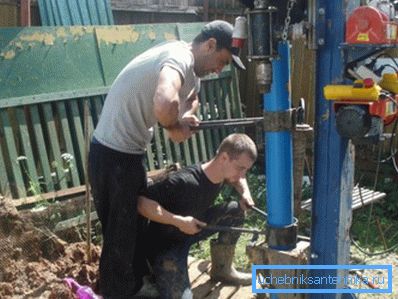
Wells
Drilling depth
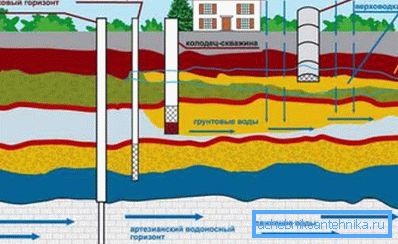
- There is an erroneous opinion that if a well is made on water, it means that it is artesian, but this is absolutely not the case - everything depends on the aquifer, which can be either waterproof or sandy. Thus, the artesian is drilled to aquifers, which lie between two water-resistant layers (pebbles or limestones). The depth of drilling in such cases can reach from 30 to 250m and even more, while drilling on sand does not exceed 30-40m.
- The Law on Subsoil, adopted by the Russian Federation of 02/21/1992 as amended on 12/28/2013, considers artesian water strata as state property and a license is required for such drilling, which is not so easy to obtain, since the instructions of this code must be observed. The main problem here is in the area of the sanitary zone, which should have 6060m2, and with a special resolution of 3030m2 (there should not be any facilities). Not everyone can afford such a plot, so an artesian is usually equipped with a chuck and most often drilled on sand.
| Name of the indicator | Drilling on sand | Artesian well |
| Aquifer | Sands | Limestone |
| Productivity in l / hour | 500 | 3000 |
| Average duration of operation | From 2 to 10 years | Up to 50 years |
| Probability of man-made impact | maybe | Missing |
| The need for permanent water intake | Yes | Not |
| Average depth | From 5 to 30 meters | From 20 to 300 meters |
The table of indicators for different sources
Drilling

We will now learn how to make a well for water by means of hydro-drilling with a small-sized MBU installation. You can rent an installation, a generator and a motor pump, or buy it in a store if you decide to do it professionally.
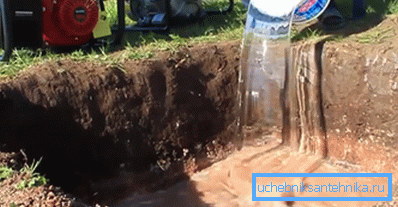
Directly near the place where the penetration will be carried out, you need to dig up a water pit with your own hands, which will flush out the waste soil. In terms of volume, such a caisson should contain at least two cubic meters of water. A shallow (1 bayonet) pit for connection to the well is also excavated from it to the point of penetration.
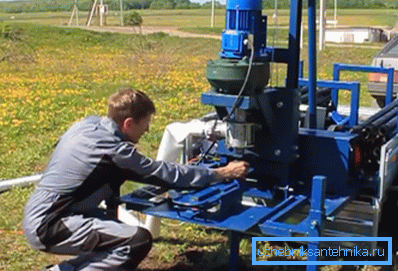
Now you need to install the MBU and for its stability there are special supporting legs (they are displayed differently in different makes of cars, but their functionality is the same as for a crane).
After installation, wind the drill onto the swivel and lower the carriage to the ground, up to the stop - this is how the centering is performed (see photo above). Then unscrew the drill, leaving it in place, lift the carriage and insert the bar to extend.
Recommendation. The borehole cross-section should correspond to the diameter of the submersible pump that you will use in the future. That is, the pump should already be at least a few centimeters.
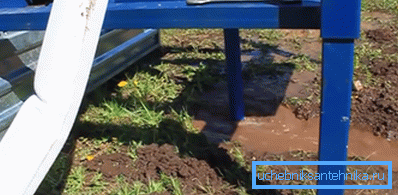
Now you need to connect the generator and the motor pump with sleeves. One sleeve with a filter at the end is lowered into the pit with water and screwed to the inlet of the compressor. Another hose connects the pump with the swivel, where water flows into the well and, washing out the waste soil along the groove, flows into the pit.
You will have to maintain the water level in the caisson so that its volume is always somewhere at the level of two cubic meters - the intensity of leaching depends on it. You will add booms until you reach the desired aquifer, the depth of which varies greatly in different areas, regions and even areas.
Do not forget that hydrodrilling is effective for clay, loamy, sandy and chernozem soils, but not for rock formations.
Note. Since the rate of penetration depends largely on the intensity of leaching, it is best for you to use a mud motor pump with a capacity of 2 to 2.5 kW.
Cleaning
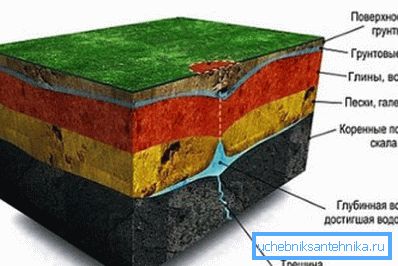
You may have heard this: What to do if the water left the well?, But the fact is that in most cases the question is simply groundless. Water can go away only in cases where a shift occurs in the layers that changes the aquifer, but this happens very rarely.
However, if this happened, then you should mostly think about a new drift, or (as an option) about deepening the old one, and in other cases it is necessary to clean it in one way or another.
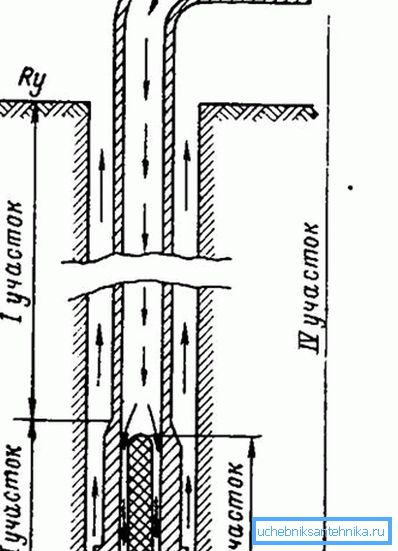
There are four basic methods for cleaning:
- Water jet from the surface;
- Purge;
- Pumping with two pumps;
- Use zhelonka.
So, there is not enough water in the well - what to do? The first method involves the use of a pump, from which a hose is lowered to the filtration zone and water is pumped under pressure, which flushes sedimentary rocks (silt and / or sand) out.
The problem here is the uncontrolled release of dirty water from the well, as the adjacent area is polluted, but to avoid contamination, the area can be covered with greenhouse film or burlap.
The second method is very similar to the first, only here air is supplied, but already under the pressure of 10-15 atmospheres. Although the discharge of dirty liquid is more limited here, but a strong pressure can damage the filter, which, moreover, loses strength over time. In case of its destruction, it is not restored and you will have to drill a new well.

We look further, what to do if there is not enough water in the well, and this is cleaning with two pumps, one of which you already have - a submersible one. This method is rather slow, but reliable and effective - you can see its principle in the diagram above.
The bottom line is this: the pump feeds water, picking it up from a separate tank and eroding the oxy-sand formations, and the submersible pump pumps it into the same tank, but pours it through the filter (the usual bucket with a net or stocking instead of the bottom).

And finally, the last method, the price of which is the lowest, but the effect is the best. This is the use of zhelonka, which can be collected not only silt with sand, but also small pebbles. On average, such work takes 5-6 hours, and it is time consuming.
Conclusion
In conclusion, I would like to remind you how to determine the quality of water from a well in your own area. Of course, the best method is laboratory analysis, but it is also a change in the taste and color of the liquid, and also a decrease in pressure in the taps (decrease in flow rate).